Embodiment Practices: How to Heal Through Movement
 When was the last time you felt truly connected to the sensations of your body and fully aware of the present moment?
When was the last time you felt truly connected to the sensations of your body and fully aware of the present moment?
It is easy to get disconnected when listening to the demands of life.
We are trained to ignore internal sensations and what the body is telling us so we can follow the rules of life implied by school or work – all the external demands and expectations.
No wonder we are a society full of mental health issues, physical ailments, and skyrocketing healthcare costs. In the United States, mental healthcare spending grew by 4.6% in 2019, and total healthcare costs reached $3.8 trillion or $11,582 per person (Centers for Medicare and Medicaid Services, 2020).
Obviously, we need mental, emotional, and physical healing. One powerful psychological approach does just that. Embodiment practices offer a unique avenue to connection, wholeness, and health in each of these areas. We’ll look at what it is and the philosophy behind it.
Before you continue, we thought you might like to download our three Mindfulness Exercises for free. These science-based, comprehensive exercises will not only help you cultivate a sense of inner peace throughout your daily life, but also give you the tools to enhance the mindfulness of your clients, students, or employees.
This Article Contains:
- What Are Embodiment Practices in Psychology?
- Embodiment Philosophy and Theory
- 3 Examples of Embodiment in Psychotherapy
- 5 Healing Exercises for Your Sessions
- Embodiment Coaching: Training & Certifications
- A Look at Embodiment in Learning
- 5 Fascinating Books & Podcasts
- Resources From PositivePsychology.com
- A Take-Home Message
- References
What Are Embodiment Practices in Psychology?
Embodiment practices use the body as a tool for healing through self-awareness, mindfulness, connection, self-regulation, finding balance, and creating self-acceptance. Embodiment explores the relationship between our physical being and our energy. It involves the interaction of our body, thoughts, and actions.
Embodiment practices fall under the umbrella of somatic psychology. Somatic psychology assumes:
- Events impact our physical, emotional, cognitive, and spiritual being as a whole.
- All events must be processed through our sensory systems.
- Thoughts are physiological and occur throughout the body, not just the mind.
Embodiment practices often use dance or movement therapy, visualization, sensory awareness, and progressive muscle relaxation. Using embodiment practices in psychotherapy might involve a client identifying sensations as topics are explored in session to expand the healing process.
Embodiment is cultivated through an integration of three sensory feedback systems (Korner, Topolinski, & Strack, 2015):
- Exteroception, which is sensing the external environment through the body (eyes, ears, nose, tongue, skin) to the brain. A good example of this would be a mindfulness exercise that focuses on paying attention to specific sensations.
- Proprioception refers to the sensory feedback of the body related to gravity. Proprioception happens when neurons bring sensory information from the joints of the body and inner ear to the brain. A yoga practice or embodiment practices using dance are examples of this.
- Interoception involves the sensory experience of the internal body. It may include a sense of hunger, thirst, alertness, body temperature, pain, or tension. It provides feedback about emotional experiences facilitated by sensory neurons that bring information from muscles, organs, and connective tissue to the brain. A mindful eating exercise would be a good example of this.
Embodiment Philosophy and Theory
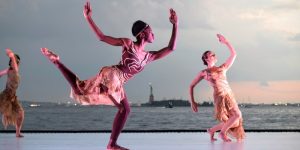 Embodiment philosophy and theory are based on the idea that the mind is integrated into the body’s sensorimotor systems, and cognitive processes are guided by body-based systems (Barsalou, 2008).
Embodiment philosophy and theory are based on the idea that the mind is integrated into the body’s sensorimotor systems, and cognitive processes are guided by body-based systems (Barsalou, 2008).
These theories state that thinking about an object or a person triggers the simulation of the experience itself. Neuroscience supports embodiment philosophy, and studies demonstrate that merely thinking of music, faces, flavors, odors, and other objects evokes body-related activity in the brain (Pulvermuller, 2001).
Essentially, the brain guides interaction with the world, but that interaction is mediated by the body. The basic claim of embodiment theory is that all psychological processes are influenced by the body, including sensory systems, motor systems, and emotions (Glenberg, 2010).
This is supported by cognitive and social development theories, social psychology, neuroscience, clinical psychology, and psychology of education (Glenberg, 2010).
3 Examples of Embodiment in Psychotherapy
Moving beyond the theory and philosophy, below are three examples of embodiment practices.
Treating depression
Embodied techniques can be particularly helpful in the treatment of depression. Research has shown that Mindfulness Based Cognitive Therapy was more effective at treating depression and preventing relapse than talk therapy alone (Michalak, Burg, & Heidenreich, 2012).
Incorporating grounding techniques and awareness of physical sensations and physiological responses to specific thoughts provides feedback that clients can monitor and learn to control.
Additionally, clients can learn physiological ways to increase activation, energy, and positive thoughts through upbeat music, vigorous movement, and achieving challenging tasks.
Treating anxiety
Embodiment practices are a great way to treat anxiety by helping clients get their minds out of the way. Anxiety is typically discussed in terms of the “fight or flight” response, which is a biological and physiological response to stressors in the environment caused by the brain’s faulty perception.
Kolter (2014) describes anxiety as a state of “hypofrontality,” where the brain is overwhelmed by sensory information, and the rational, analytical prefrontal cortex goes offline.
Embodiment practices can reduce anxious thoughts and create a greater sense of calm and empowerment by challenging and engaging the body and reducing the overactivity of the mind (Kolter, 2014). Physical movement also provides an avenue to shift the parasympathetic nervous system physiologically out of the fight-or-flight response.
Treating eating disorders with embodiment
Individuals with eating disorders have become disconnected from themselves and their bodies (Costin & Kelly, 2016).
They have stopped listening, paying attention, and responding to their body’s signals. Eating disorder behaviors are ones that temporarily distract and bring relief from intense emotions. Embodiment practices teach clients with eating disorders to accept themselves where they are and create a relationship with the mind/body that provides space for healing (Costin & Kelly, 2016).
Yoga is one of the most studied embodiment practices for treating eating disorders. When comparing a control group with an individualized yoga treatment group receiving standard treatment for eating disorders, the yoga group demonstrated larger improvement in symptoms a month after treatment (Carei, Fyfe-Johnson, Breuner, & Marshall, 2010).
Additionally, food preoccupation decreased significantly after all yoga sessions, and the authors concluded that yoga therapy is an effective adjunct to standard eating disorder treatment (Carei et al., 2010).
5 Healing Exercises for Your Sessions
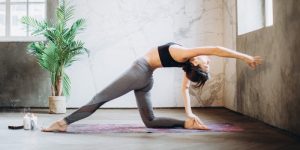 Essentially, any movement or focus on physical sensation can become an embodiment exercise.
Essentially, any movement or focus on physical sensation can become an embodiment exercise.
The key is to do the activity mindfully and notice your senses (smell, sight, touch, taste, sound).
Things like taking a bubble bath, baking/cooking, and gardening can become healing tools for clients if they engage their senses, do things slowly, and allow themselves to connect more fully to their body and the specific experience.
Short exercises for any session
Ideas for incorporating embodiment into coaching or therapy sessions include the following:
- Begin the session with a mindful breathing exercise to center the client and help connect the mind and body.
- Take the session outdoors for a mindful, barefoot walk in the grass, and talk about how the sensations relate to anything the client is going through.
- Incorporate just a few moments of stretching (neck and upper body stretches are easy to do in office settings).
Dance or movement therapy
Dance therapy is based on the idea that the mind and body are connected, and that dance can have a healing power through psychotherapeutic methods. The American Dance Therapy Association (2018) provides evidence that dance can promote emotional, social, cognitive, and physical integration to improve health and wellbeing.
With the complexity of movement, rhythm, and sensory interaction, dance provides additional elements of healing through embodiment. As a therapeutic technique, it includes hedonism (non-goal-oriented pleasure), aesthetic experience, communication through expression, creativity, and the specific body feedback mechanisms related to movement, shape, and physical sensation (Koch et al., 2019).
Visualization
Neuroscience research suggests that the same portions of the brain are activated when visualizing an experience (whether physical or auditory) as when experiencing it in real time (Chen, Penhune, & Zatorre, 2008).
Sight, hearing, touch, and sense of space are all activated by images, sounds, pressure, and body movements. Our sense of the environment does not occur as a static or objective process, but as an integration of sensations. Therefore, visualization can be a powerful healing tool in situations where physical movement is not possible. For example, clients can visualize the act of walking in nature while sitting in an office setting.
Individuals who are not physically capable of dancing to music can visualize the movement, sensations, and sounds they might experience if they were.
Progressive muscle relaxation
Progressive muscle relaxation involves tensing a group of muscles and releasing them in conjunction with the breath (inhale as you tense, exhale as you release). There is significant evidence that this technique helps with physical relaxation, decreases stress, and improves body awareness (Freeman, 2009).
By systematically addressing each area of the body, clients can develop an awareness of where they hold muscle tension and learn how to release it physically. When the body is physically relaxed, it is much harder to feel anxious. There are audio guides and mental health books that can help walk you through a progressive muscle relaxation activity.
Embodiment & yoga
As one of the most studied forms of embodiment therapy, yoga offers a perfect mind–body practice for connection. Through breath, postures, and moment-to-moment awareness, yoga can teach clients to let go of preconceived ideas (what a pose “should” be) and the comparison of others, and notice what positions and movement feel like rather than what they look like.
Specific yoga postures are thought to offer relief for specific moods, ailments, and issues. For example, inversions (head below hips) are thought to promote emotional healing, improve energy, and help guide energy toward the heart (Costin & Kelly, 2016).
How to use breath work
In yoga, breath work is called “pranayama” and is a foundational aspect of the embodiment practice. However, breath work is nothing fancy in embodiment. It is simply breathing in different ways and focusing your attention and awareness on the breath.
Breath work creates an immediate connection between the mind and body, and focuses on a basic component of human life.
Examples of breath work include:
- Three-part breathing (filling up the belly, ribcage, and chest then exhaling the same way)
- Square breathing (inhale for four counts, hold for four counts, exhale for four, hold for four, etc.)
- Diaphragmatic breathing (lie down, place a light object such as a book on the diaphragm, and use the breath to make the book rise and fall)
Movement practices and embodiment
Aside from pranayama, yoga incorporates the physical practice of “asanas” or postures. As mentioned above, specific postures and movement aim to help alleviate physical, mental, and emotional distress and promote healing and wellbeing.
The postures and movement aspect of yoga invite individuals to tune into sensations without judgment. The deepened awareness of the physical posture and how it feels creates a powerful connection between mind, body, and spirit.
Life coaching techniques that actually work
Embodiment Coaching: Training & Certifications
This six-month course offers a certificate in embodiment coaching. The curriculum can be useful for a variety of disciplines and practitioners who want to use the mind–body connection to facilitate healing mentally, emotionally, or physically.
The Embodiment Coaching Institute offers training and certifications for coaching. It uses a holistic approach to teach multi-modality techniques for transforming personal and professional lives and relationships.
A Look at Embodiment in Learning
 Traditional Western pedagogy is largely rooted in Descartes’ (1637) philosophy, which is founded on a mind–body dichotomy.
Traditional Western pedagogy is largely rooted in Descartes’ (1637) philosophy, which is founded on a mind–body dichotomy.
One side of the body is a “machine” containing organs and tissue, and the other side is the mind, which is independent of the laws of nature. The interaction between the body and the mind is only enabled through the pineal gland and the “seat of the soul” (Descartes, 1637).
Using this philosophy as a basis of learning is an unfortunate disservice to the educational system. Theories of embodied cognition suggest that the mind is integrated into the body’s sensorimotor systems, rather than an abstract, isolated entity (Barsalou, 2008).
Body movement, gestures, and physical expressions support both long and short-term memory; motor actions are thought to improve the storage of memory because they engage aspects of procedural memory in the learning process (Macedonia, 2019).
Body movement and stimulation activate multiple memory networks, including the motor cortices, cerebellum, and the basal ganglia (Macedonia, 2019). In other words, the body represents and stores knowledge and is a useful tool for learning new information.
The body is a powerful tool to understand and learn school subjects, specifically language and mathematics (Macedonia, 2019). What does this mean for education systems? Learning outcomes can be improved in a variety of subjects through:
- Including movement into learning activities, such as dancing to music with lyrics that teach subject matter
- Incorporating mindfulness or breathing exercises at the beginning or end of a lesson
- Keeping physical activity, recess, recreation, and exercise in school settings
- Using virtual or augmented reality that incorporates movement with learning
- Encouraging learners to pair gestures, postures, or facial expressions with new content to increase memory storage
5 Fascinating Books & Podcasts
If you wish to learn even more of this fascinating topic, we suggest adding any of the following books and podcasts to your reading and listening lists.
1. Embodied Healing: Survivor and Facilitator Voices From the Practice of Trauma-Sensitive Yoga – Jenn Turner
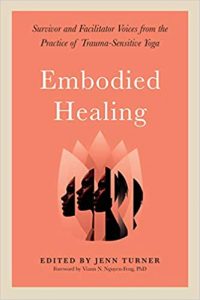 Embodied Healing is a beautiful collection of work and essays from a variety of viewpoints, such as those of therapists, trauma survivors, and yoga instructors.
Embodied Healing is a beautiful collection of work and essays from a variety of viewpoints, such as those of therapists, trauma survivors, and yoga instructors.
It is based on applications of Trauma Center Trauma-Sensitive Yoga, which incorporates yoga, mindfulness, and movement into healing trauma.
Find the book on Amazon.
2. Embodiment in Psychotherapy: A Practitioner’s Guide – Gernot Hauke and Ada Kritikos
 Embodiment in Psychotherapy is a guide and resource for therapists, practitioners, and instructors that provides practical ideas on how to implement embodiment techniques into sessions.
Embodiment in Psychotherapy is a guide and resource for therapists, practitioners, and instructors that provides practical ideas on how to implement embodiment techniques into sessions.
It teaches the basics of embodiment skills and the scientific rationale for using them.
Find the book on Amazon.
3. The Body Keeps the Score: Brain, Mind, and Body in the Healing of Trauma – Bessel van der Kolk
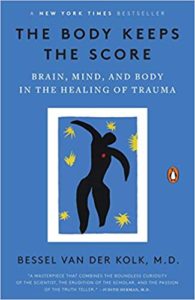 The Body Keeps the Score is an incredible book by Bessel van der Kolk. Using personal experiences and scientific evidence, he discusses how trauma can manifest and become “stuck” in the body.
The Body Keeps the Score is an incredible book by Bessel van der Kolk. Using personal experiences and scientific evidence, he discusses how trauma can manifest and become “stuck” in the body.
Find the book on Amazon.
4. Befriending Your Body
 The Befriending Your Body episode of the Soul Sessions Podcast is designed for women but can be helpful for anyone struggling to love and accept themselves.
The Befriending Your Body episode of the Soul Sessions Podcast is designed for women but can be helpful for anyone struggling to love and accept themselves.
Using the mind–body duality, the host and guest discuss issues of body image, eating disorders, self-compassion, and empowerment.
5. Beyond My Battle
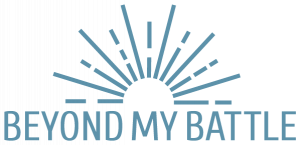 The Beyond My Battle Podcast focuses on dealing with chronic pain and health issues.
The Beyond My Battle Podcast focuses on dealing with chronic pain and health issues.
Using an embodied approach with self-compassion, in this particular episode, listeners can learn how to cope with shame, anger, relationship struggles, fear, helplessness, and emotional pain.
Resources From PositivePsychology.com
Our blog offers a large selection of exercises, questionnaires, and tools for healthcare professionals. Some of these tools are suggested below as suitable embodiment practices.
- The Raisin Meditation
This six-step meditation helps clients reconnect with their senses by narrowing attention in on the different facets of a raisin. - Breath Awareness
This simple mindfulness meditation invites clients to gently bring attention to the breath and notice changing sensations in the body associated with breathing. - Nature Play
This simple six-step exercise helps clients practice moving and listening mindfully while in nature or taking a walk. - Yogic Breathing
This breathing exercise invites clients to try pranayama, or yogic breathing, to activate the parasympathetic nervous system and induce calm.
If you’re looking for more science-based ways to help others enjoy the benefits of mindfulness, this collection contains 17 validated mindfulness tools for practitioners. Use them to help others reduce stress and create positive shifts in their mental, physical, and emotional health.
A Take-Home Message
Contrary to Descartes’ (1637) original theories, neuroscience, psychology, and research in learning have consistently demonstrated the intricate connection between the mind and body.
This connection is the foundation for healing through embodiment practices and techniques. When we create somatic connections, each experience in life becomes rich, meaningful, and an avenue to greater wellbeing.
Whether it’s yoga, dance, mindfulness, or breathing exercises, the options for incorporating powerful embodiment skills into therapy are endless. By exploring the mind–body connection, we can tap into self-discovery, heal ourselves, and bring more to the world around us.
We hope you enjoyed reading this article. Don’t forget to download our three Mindfulness Exercises for free.
- American Dance Therapy Association. (2018). About. Retrieved July 14, 2021, from https://www.adta.org/
- Barsalou, L. W. (2008). Grounded cognition. Annual Review of Psychology, 59, 617–645.
- Carei, T. R., Fyfe-Johnson, A. L., Breuner, C. C., & Marshall, M. A. (2010). Randomized controlled clinical trial of yoga in the treatment of eating disorders. Journal of Adolescent Health, 46(4), 346–351.
- Chen, J., Penhune, V., & Zatorre, R. (2008). Moving on time: Brain network for auditory-motor synchronization is modulated by rhythm complexity and musical training. Journal of Cognitive Neuroscience, 20(2), 226–239.
- Centers for Medicare and Medicaid Services. (2020). National health expenditure data: Historical. Retrieved July 11, 2021, from https://www.cms.gov/Research-Statistics-Data-and-Systems/Statistics-Trends-and-Reports/NationalHealthExpendData/NationalHealthAccountsHistorical
- Costin, C., & Kelly, J. (2016). Yoga and eating disorders: Ancient healing for modern illness. Routledge.
- Descartes, R. (1637). A discourse on method: Meditations on the first philosophy principles of philosophy. Dent.
- Freeman, L. (2009). Mosby’s complementary and alternative medicine: A research-based approach (3rd ed.). Elsevier.
- Glenberg, A. M. (2010). Embodiment as a unifying perspective for psychology. Cognitive Science, 1, 586–596.
- Hauke, G., & Kritikos, A. (2018). Embodiment in psychotherapy: A practitioner’s guide. Springer.
- Koch, S., Riege, R. F., Tisborn, K., Biondo, J., Martin, L., & Beelmann, A. (2019). Effects of dance movement therapy and dance on health-related psychological outcomes: A meta-analysis update. Frontiers in Psychology, 10(1806), 1–27.
- Kolter, S. (2014). The rise of superman: Decoding the science of ultimate human performance. New Harvest Press.
- Korner, A., Topolinski, S., & Strack, F. (2015). Routes to embodiment. Frontiers in Psychology, 6(940), 1–20.
- Macedonia, M. (2019). Embodied learning: Why at school the mind needs the body. Frontiers in Psychology, 10(2098), 586–596.
- Michalak, J., Burg, J., & Heidenreich, T. (2012). Don’t forget your body: Mindfulness, embodiment and the treatment of depression. Mindfulness, 3, 190–199.
- Pulvermuller, F. (2001). Brain reflections of words and their meaning. Trends in Cognitive Science, 5(12), 517–524.
- Turner, J. (2020). Embodied healing: Survivor and facilitator voices from the practice of trauma-sensitive yoga. North Atlantic Books.
- van der Kolk, B. (2015). The body keeps the score: Brain, mind, and body in the healing of trauma. Penguin Books.
Let us know your thoughts
Read other articles by their category
- Body & Brain (49)
- Coaching & Application (58)
- Compassion (25)
- Counseling (51)
- Emotional Intelligence (23)
- Gratitude (18)
- Grief & Bereavement (21)
- Happiness & SWB (40)
- Meaning & Values (26)
- Meditation (20)
- Mindfulness (44)
- Motivation & Goals (45)
- Optimism & Mindset (34)
- Positive CBT (29)
- Positive Communication (20)
- Positive Education (47)
- Positive Emotions (32)
- Positive Leadership (18)
- Positive Parenting (15)
- Positive Psychology (33)
- Positive Workplace (37)
- Productivity (17)
- Relationships (43)
- Resilience & Coping (37)
- Self Awareness (21)
- Self Esteem (38)
- Strengths & Virtues (32)
- Stress & Burnout Prevention (34)
- Theory & Books (46)
- Therapy Exercises (37)
- Types of Therapy (63)
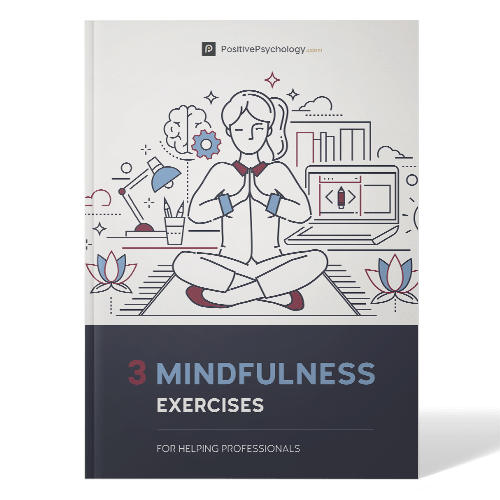
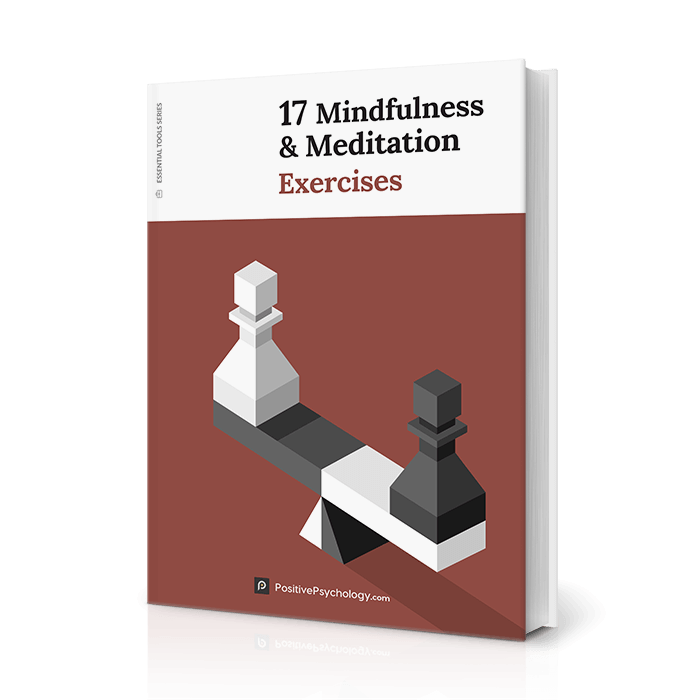
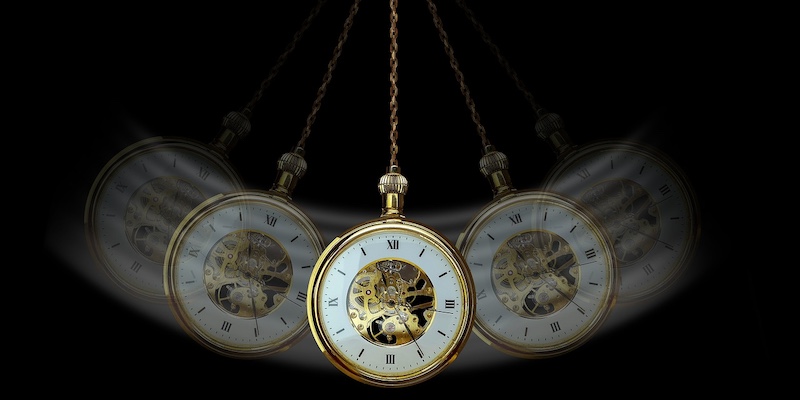


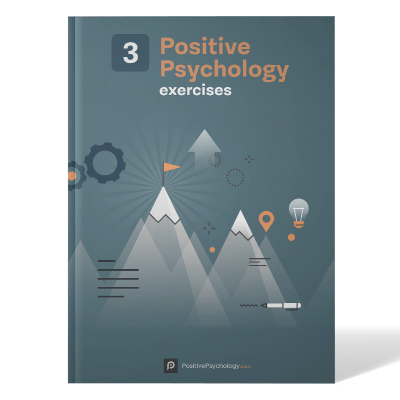
What our readers think
Excellent Article, Excellent Blog , Excellent Site ✅✅✅
Beautiful articulation